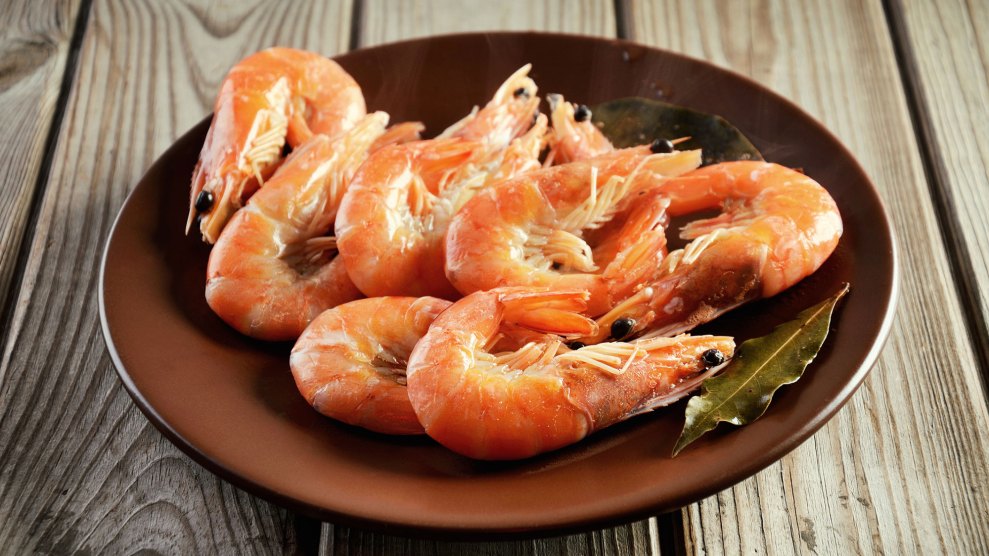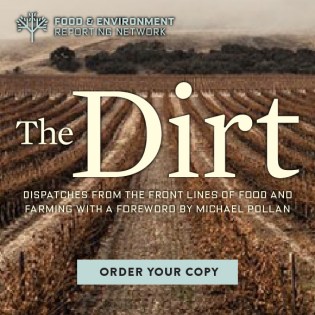
TanyaRu/Getty
This story was originally published by Food and Environment Reporting Network.
This past spring, Louisiana-based professor Dr. Nancy Rabalais, perhaps the world’s most renowned researcher on marine dead zones, predicted that the summer of 2017 would see the largest hypoxic area in the Gulf of Mexico in recorded history. Last month she was proven right.
“The prediction was based on the May nitrogen load in the Gulf of Mexico,” Rabalais said from her office at the The Louisiana Universities Marine Consortium. Excess nitrogen accounts for 80 percent of the dead zone variation and “the load was high this year. Based on the load, we predicted the size. And it turned out it was the largest ever.” In part, heavy spring rains were to blame, because they washed nutrients off farms in the Midwest and into streams that emptied into the Mississippi River, and eventually, the Gulf.
There are now about 500 dead zones around the world, fueled by nitrates from fertilizer and industrial runoff. In the US, these affect a wide range of lakes, inland waterways and coastal marine areas. And it appears these dead zones are getting worse. According to Yale Environment 360, a recent study in Science projected that “climate change will increase the amount of nitrogen ending up in US rivers and other waterways by 19 percent on average over the remainder of the century—and much more in hard-hit areas, notably the Mississippi-Atchafalaya River Basin (up 24 percent) and the Northeast (up 28 percent).”
Those increases in nitrogen do not reflect more intensive agriculture, or increased human population. Rather, they reflect “extreme weather events and increased total rainfall predicted in most climate change scenarios,” the article explained. Even if farmers spread the same amount of fertilizer on their fields, more will end up in the water.
These nutrients stimulate algae growth, often turning waters blue-green, or red (depending on the species). When the algae dies, it is consumed by bacteria which sucks up oxygen in the process, making it tough for sea life to survive. In the Gulf of Mexico, the dead zone has a particularly potent effect on seafood that dwells in the lower levels of the water.
“Things that can [normally] be trawled from the bottom are just not there,” Rabalais said. It’s particularly bad for the Gulf’s most famous seafood, shrimp, which tend to migrate to offshore foraging areas just as the dead zone is forming. “When the area of of low oxygen is pervasive,” Rabalais said, “they can’t do that and that translates into lower-sized shrimp and lower-priced shrimp.”
In a 2013 FERN article on the dead zone, I looked at some of the mitigation measures underway to deal with nitrogen runoff. Some farmers have tried to carefully control the underground plumbing or “tiling” that drains their fields during spring rains. Others try to plant their streamside land in forest to retain nutrients. Still other programs further south seek to slow the river’s speed or build up marshland at the delta, near the end of the Mississippi river, to absorb and process nutrients before they can hit the ocean. But many of the on-farm measures are voluntary and don’t seem to work.
None of these initiatives have slowed the one factor that overwhelms all conservation measures: the impetus to plant corn. Corn is a “leaky” crop, which does a poor job holding nutrients in the soil. And the USDA projects this year’s corn crop will be the third largest on record, despite the lowest prices in 11 years.
Will we see still larger Gulf Dead Zones in the years to come? “It’s a spike,” Nancy Rabalais told me, “But I wouldn’t call it odd.” Like corn, the dead zone seems to be parked at a consistently large size, unlike the late ‘80s, when “there just wasn’t that much to map,” Rabalais said.
In fact, this year’s dead zone could possibly be even larger than Rabalais measured. “This year we did not get to the end on the Western edge,” she said, “So it could have been 500 square kilometers larger. I didn’t get to go that far so I can’t say.” Asked if she made a conservative estimate of what is on track to become the largest dead zone in the world, “Oh,” she replied, “We’re always conservative.”

















